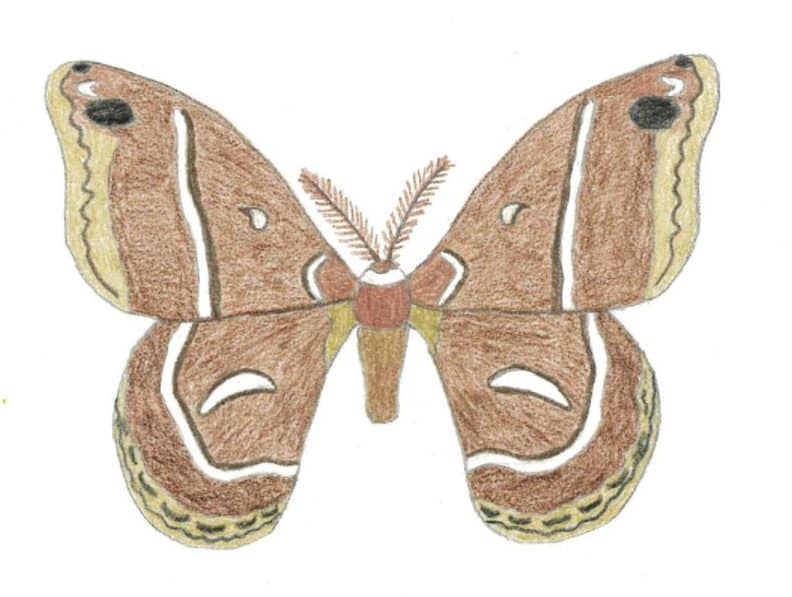
Studying Moths in the North Cascades
By Nick Engelfried, graduate student in the Institute’s 16th cohort.
To my mind, it isn’t truly spring in the lush, green landscape on the west side of the Cascades until the first half-white carpet moth (Mesoleuca gratulata) has flown. This small insect, with its delicate wings of white, gray, and dark brown, is a sign that sunny days and warmer weather have finally arrived.
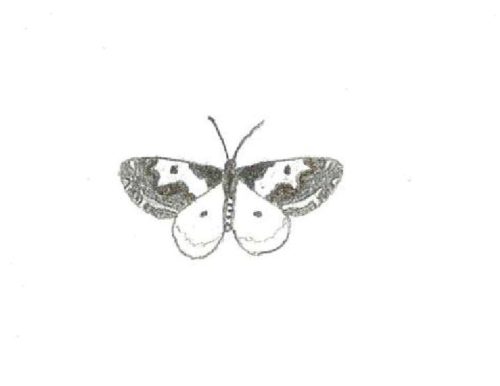
Mesoleuca gratulata. Illustration by Nick Engelfried
I chose the hundreds of moth species in the North Cascades as the subject for my in-depth study of a natural history topic at North Cascades Institute this spring. I was drawn to moths partly because of their vast diversity—there are some 11,000 species in North America, far more than the 750 or so butterflies—and partly because of how deeply underappreciated they are. If you spend time outside in western Washington, you’ve probably seen an M. gratulata at some point—but most people who take time to notice it at all will likely mistake this day-flying moth species for a small butterfly. Most moths are even less noticed, due to the nocturnal habitats, nondescript colors, and tiny size of many species.
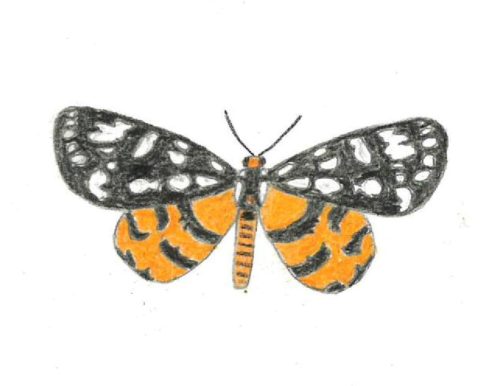
Platyprepia virginalis. Illustration by Nick Engelfriend
This spring, I embarked on a project to seek out moths wherever I could: below lights on the outsides of buildings after dark, hiding on the bark of trees and walls by day, and—for day-flying species—flitting across trails in patches of sunlight in the North Cascades forest.
I identified as many moth species as possible, including those I found this spring as well as specimens collected last summer and fall. I relied on Jerry A. Powell and Paul A. Opler’s excellent reference book, Moths of Western North America, as well as the expertise of editors at the citizen science website Butterflies and Moths of North America (BAMONA).
In addition to seeing as many species as I could myself, I generated a list of all moths from eight target families reported on BAMONA from Whatcom, Skagit, Okanogan, and Chelan Counties. This list includes nearly 150 species. For reasons of feasibility, I confined myself to “macromoths,” largely ignoring the smaller and even more numerous but very tricky to identify “micromoths.”
One of the most rewarding parts of studying moths this year has been following the emergence and disappearance of different species as their “flight periods” come and go. Most moths in the North Cascades live in this region year-round, but for much of this time they reside only in the egg, larva, or pupa stages. The length of the adult phase ranges from months in species like the tissue moth (Triphosa haesitata)—which overwinters as an adult and emerges to fly in very early spring—to only a few days in the giant Ceanothus silk moth (Hyalophora euryalis), which lives just long enough as an adult to mate and lay eggs.
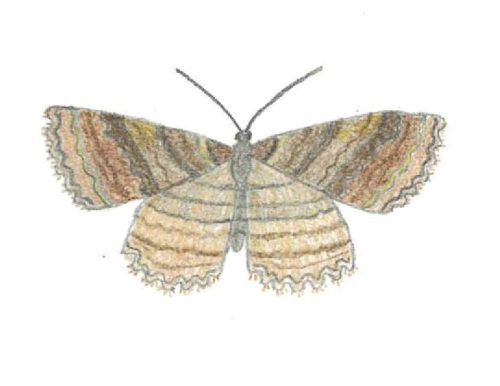
Triphosa haesitata. Illustration by Nick Engelfried
The adult phase of an insect is like the flowering stage of a plant: a life-phase designed to propagate the species, during which the organism is also most likely to draw the attention of people. Just as plants have different times for blooming, each moth has its own flight period when the adult form is active. In the North Cascades, the earliest-flying moths like T. haesitata emerge by early March. The day-flying M. gratulata first appears a month or so later, and by late April the ghostly, delicate Melanolophia imitata and the small, brown tiger moth known as Hypena californica become abundant. By late summer these will be replaced by species like the western tent caterpillar moth (Malacosoma californicum). I find the changing seasons take on new, deeper meaning when one is aware of this ebb and flow of winged insects.
The study of insects is not only fascinating and personally enriching—it is also exceptionally easy as natural history practices are concerned. Studying moths or other insects in a serious way requires no pricey equipment like binoculars. Further, it may not involve going farther afield than your backyard. While many moths I observed came from inside the North Cascades National Park Complex, I found equally interesting species in or near towns like Marblemount and Twisp. All you really need to study moths well is an inexpensive insect net and a freezer (to preserve dead specimens for identification).
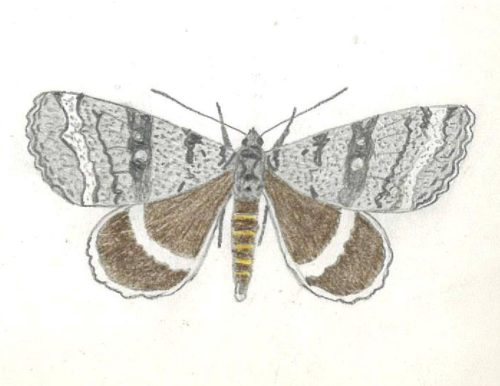
Catocala relicta. Illustration by Nick Engelfried
Citizen science projects like Butterflies and Moths of North America make studying moths even easier. Anybody, anywhere on the continent, can upload a photograph of a moth they’ve seen or collected to BAMONA. Assuming the photo is clear and detailed enough, it will be reviewed and identified by an expert, helping scientists track the populations of moth and butterfly species as they spread or contract in response to factors like climate change.
Despite all this, the serious study of moths and other insects remains largely confined to professionals and specialists. This wasn’t always so. While researching my project, I took inspiration from early twentieth century writers like W. J. Holland, author of The Moth Book. Holland wrote a weighty tome on the classification and natural history of North Americans, using easy-to-follow language clearly meant to be understood by amateur collectors as well as specialists. The Moth Book was published in 1903, and was still being widely used as late as the 1960s. I know of few natural history books today that achieve the same level of accessibility and usefulness for both scientists and non-specialists.
While people like Holland were making the study of natural history accessible, other writers like Gene Stratton-Porter inspired people to go out into swamps and forests near their communities. Stratton-Porter, a pioneering female naturalist, wrote best-selling works of fiction like A Girl of the Limberlost (published in 1909), which encouraged young people to pay attention to nature. Her 1912 nonfiction book, Moths of the Limberlost, documented the lives of moths in the quickly-vanishing swampy forests of Indiana.
Holland and Stratton-Porter lived in a time long before environmental laws that we take for granted today. Yet in some ways it was like today, with growing numbers of people becoming aware of environmental threats that challenged their ideas about progress. In the early twentieth century, these threats included the mass draining of wetlands and liquidation of forests across the Midwest, Northeast, and South. Today we face climate change and ever-more-destructive forms of fossil fuel extraction.
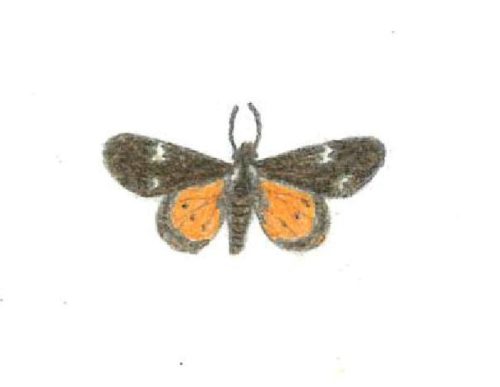
Leptarctia californiae. Illustration by Nick Engelfried
Against a background of environmental destruction in her home region, Stratton-Porter urged her readers to slow down, pay attention to the natural world, and learn to care for landscapes where they lived. I believe her message is no less important today, and that a re-connection to nature similar to the one she advocated for is essential for confronting our own environmental challenges.
For me, this process of re-connecting begins with being attentive to details of the changing seasons in the landscape I inhabit—including the comings and goings of moths and other insects. If more people were attuned to the arrival of the spring’s first half-white carpet moth or the short, annual mating flight of Ceanothus silk moths, perhaps the reality and ecological implications of climate change would be less widely denied.
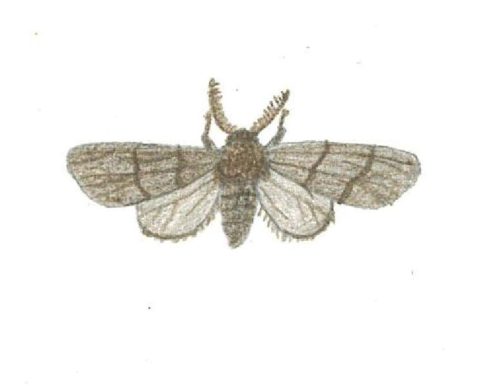
Gluphisia severa. Illustration by Nick Engelfried
But studying moths is not just about learning to notice environmental threats. It is, at least as much, about coming to more deeply appreciate the amazing natural world that still exists around us. I know of no sight more beautiful than the intricate patterns on a moth’s wing, composed of colored scales like the dots in a pointillist’s painting. I know of no better way to deeply appreciate a landscape than to become intimately familiar with the hundreds of species living in it.
I will be continuing my own study of moths into this summer, and hopefully well beyond. In so doing, I hope to become ever more deeply attuned to this rich, green ecosystem called the North Cascades.
Title illustration – Hyalophora euryalis by Nick Engelfried


Well done Nick! Love your drawings and words about these small soft creatures of summer.